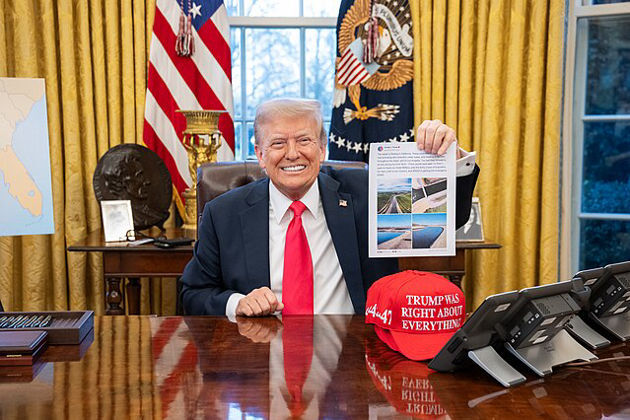Move FM Global News

Federal employees face furloughs while Trump engages online
Oct 6, 2025WASHINGTON, D.C.: On the morning of October 2, as thousands of federal employees remained at home facing furloughs and the looming risk of layoffs brought on by the government shutdown, President Donald Trump was already fully engaged—online.
By sunrise, he had launched a familiar offensive on social media, mixing messages of praise from supporters with fresh attacks on Democrats.
In one post, he misleadingly claimed that “DEMOCRATS WANT TO GIVE YOUR HEALTHCARE MONEY TO ILLEGAL ALIENS.” In another, he announced plans to meet with his budget director to identify permanent cuts to federal programs he derided as “political SCAMS.”
All this came before 8 a.m., just a fraction of the digital storm that poured from Trump’s account as the shutdown entered its second day. For a president who often treats political crises as opportunities to wage online combat, the strategy is anything but surprising. Trump has made it clear that, in the face of gridlock, his preferred weapon is a relentless stream of posts aimed at framing the narrative and undermining opponents.
The sheer volume of invective has been remarkable, even by the standards of a leader who, at 79 years old, remains one of the most chronically online figures in public life. His combative style has also been embraced by his administration, which has focused less on negotiating with Democrats and more on vilifying them.
Federal websites now feature pop-up messages blaming “the Radical Left” for the shutdown, an unusual and overtly partisan move for government portals that are supposed to remain neutral. Even automated replies from the White House press office echo the messaging, citing “staff shortages resulting from the Democrat Shutdown.”
This aggressive, attack-driven style has long defined Trump’s political brand. Critics describe it as callous and vindictive, while allies view it as direct and unfiltered. The president took a similar approach during the prolonged shutdown of late 2018 and early 2019.
That standoff, which lasted 35 days, saw him firing off dozens of tweets aimed at then-House Speaker Nancy Pelosi and Democrats while also attempting to express sympathy for unpaid federal workers. Polls at the time showed most Americans held him largely responsible, and ultimately, he backed down without securing his key demand of border wall funding.
Whether this shutdown will play out the same way remains uncertain. Democrats insist they will not pass any funding package unless it includes an extension of Affordable Care Act subsidies set to expire at the end of the year. Republicans counter that Democrats are holding essential government services hostage to unrelated demands. Early polling suggests Trump and his party could shoulder more of the public’s blame, though significant numbers of voters continue to fault both sides equally.
Unfazed by these numbers, Trump has doubled down on using Truth Social, the platform he created after his Twitter ban. This week, he posted doctored videos of Senate Minority Leader Chuck Schumer and House Minority Leader Hakeem Jeffries, one of which depicted Jeffries with a sombrero and mustache. Democrats quickly condemned the videos as bigoted. Still, Trump amplified them, pairing the images with mariachi music and quips about Democrats enlarging sombreros the longer the shutdown lasted.
Even as the shutdown postponed public events, including a National Hispanic Heritage Month celebration, Trump showed no signs of shifting to a conciliatory posture. For a few hours, his feed went silent—but only briefly. The digital barrage is likely to continue until either a deal is struck or the political costs become too steep to ignore.


